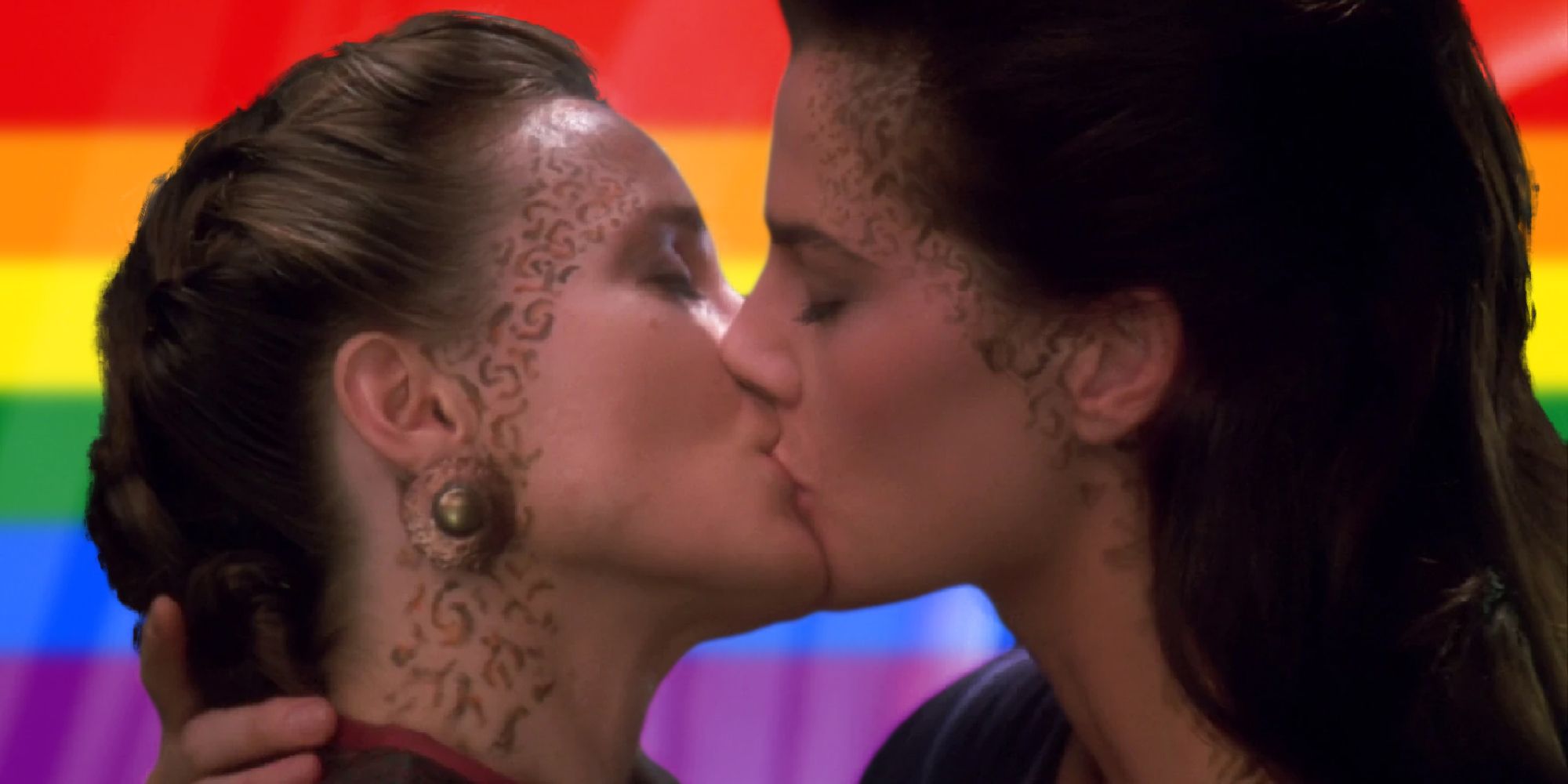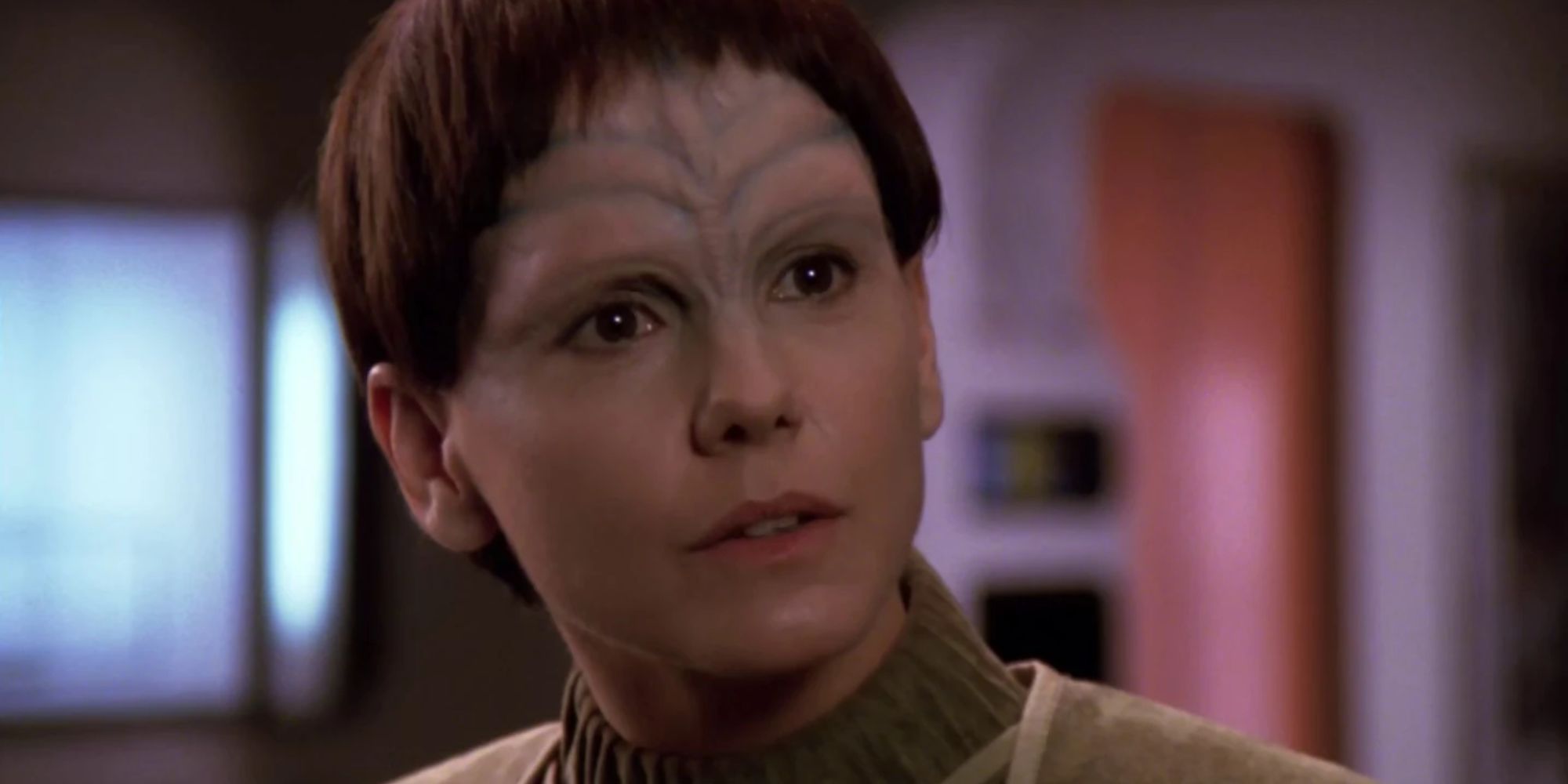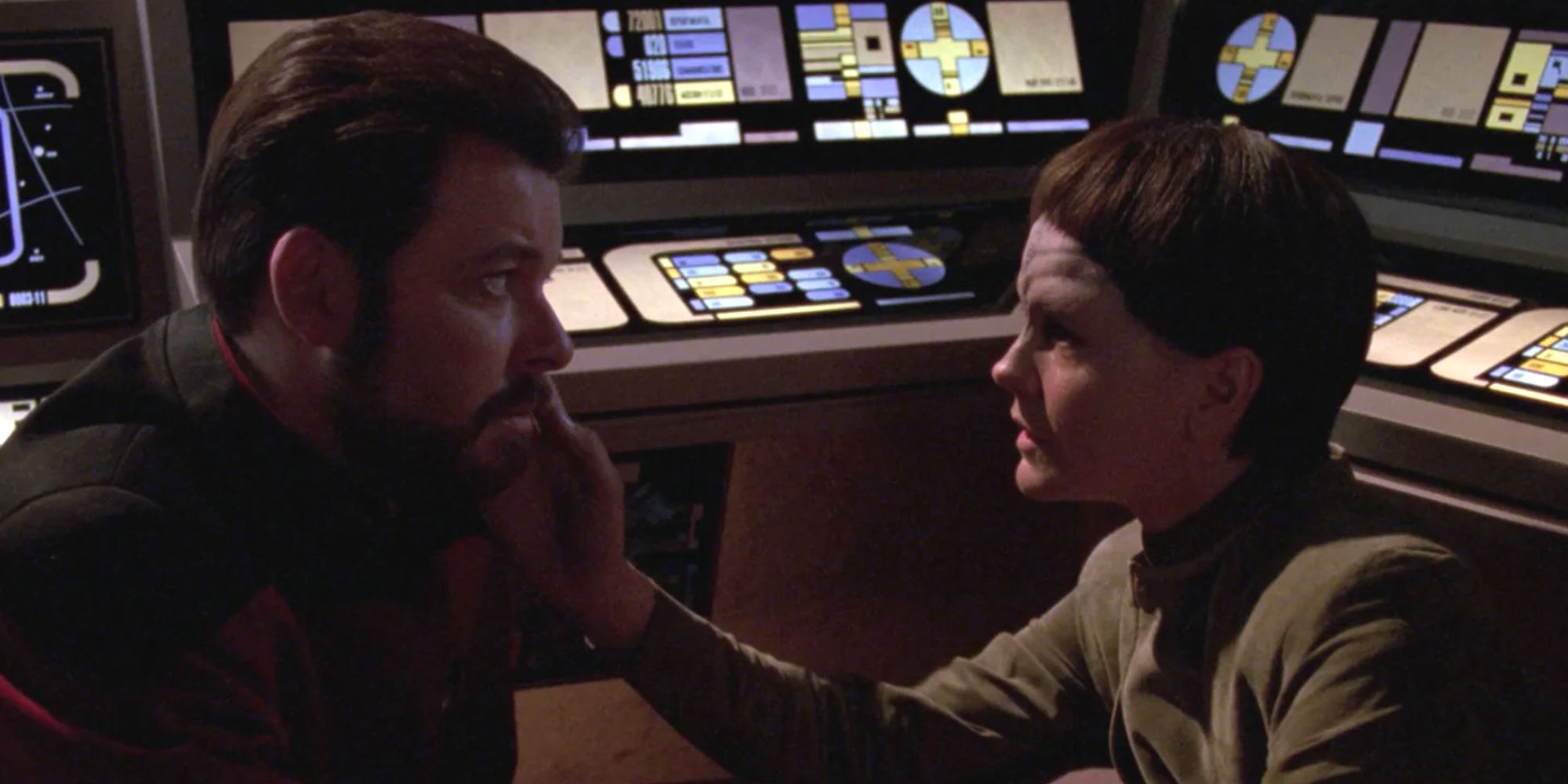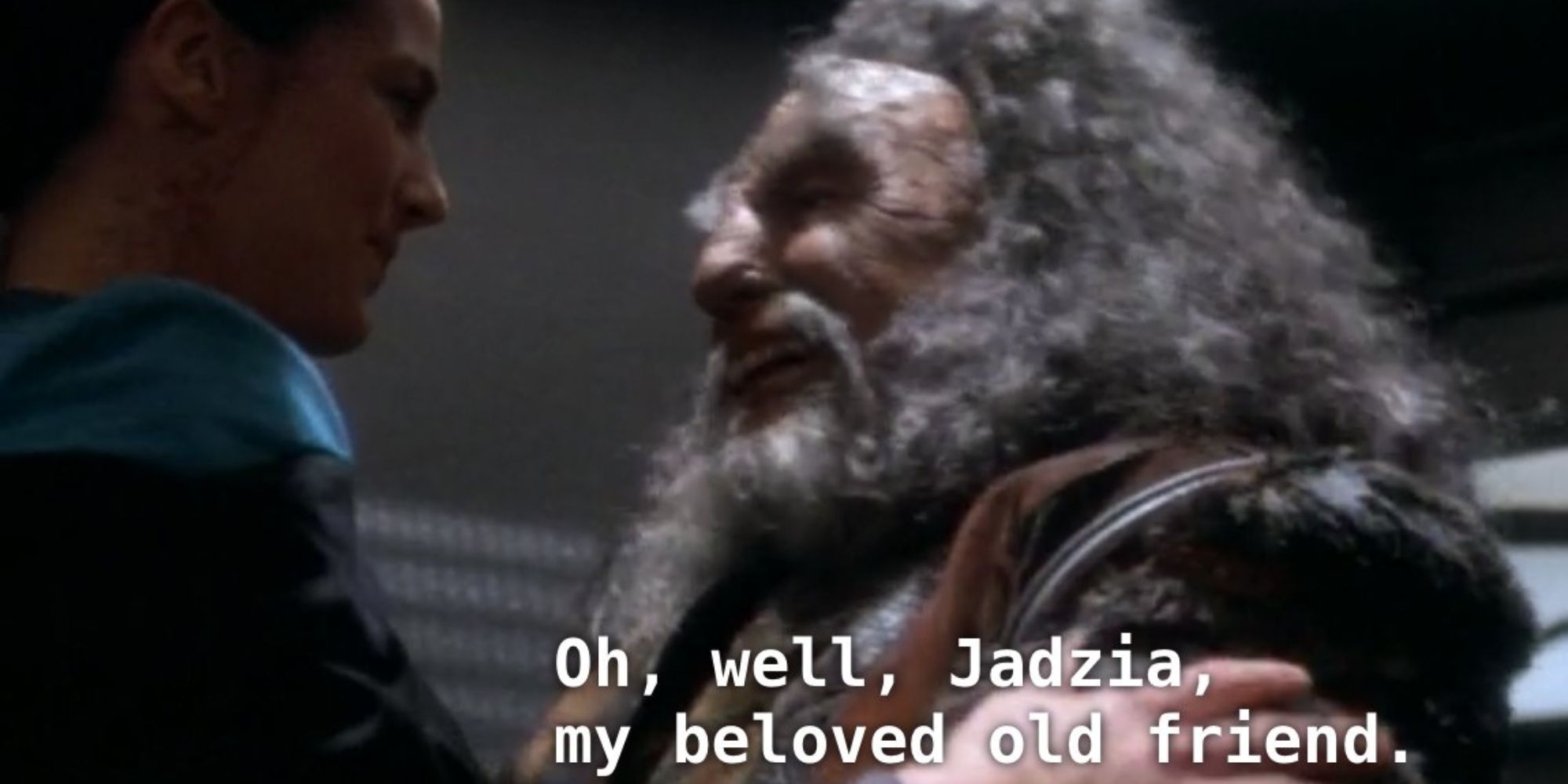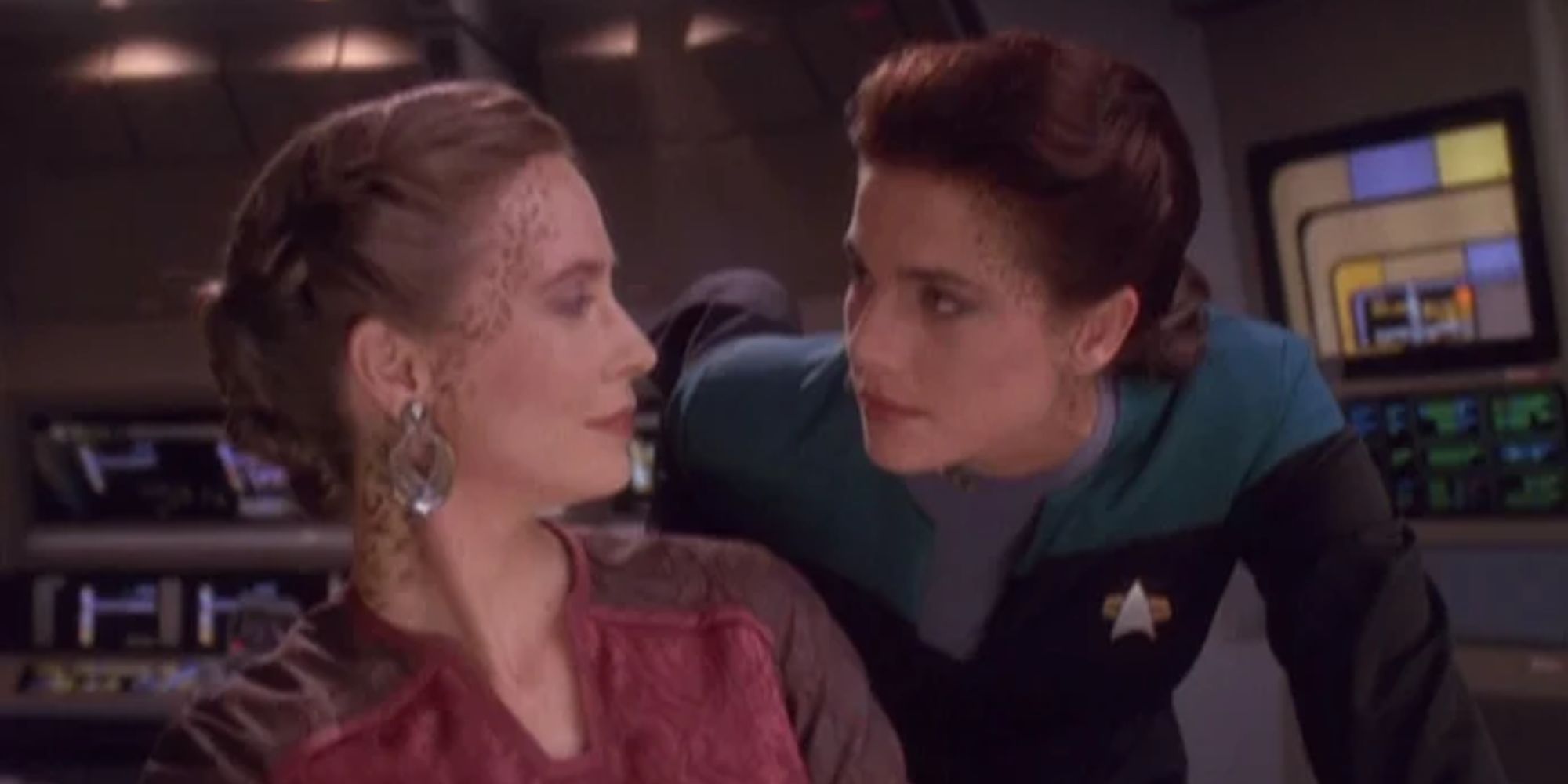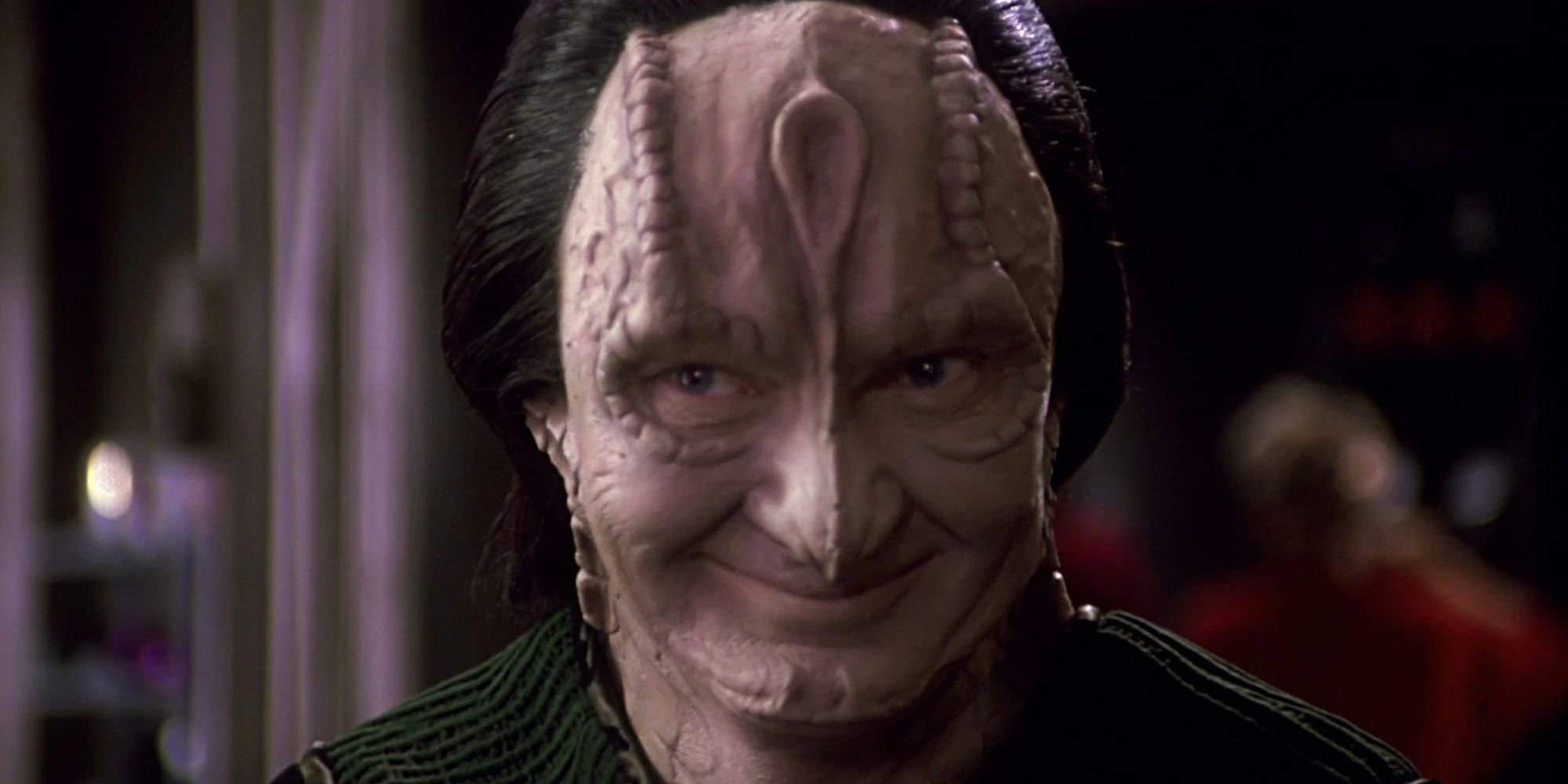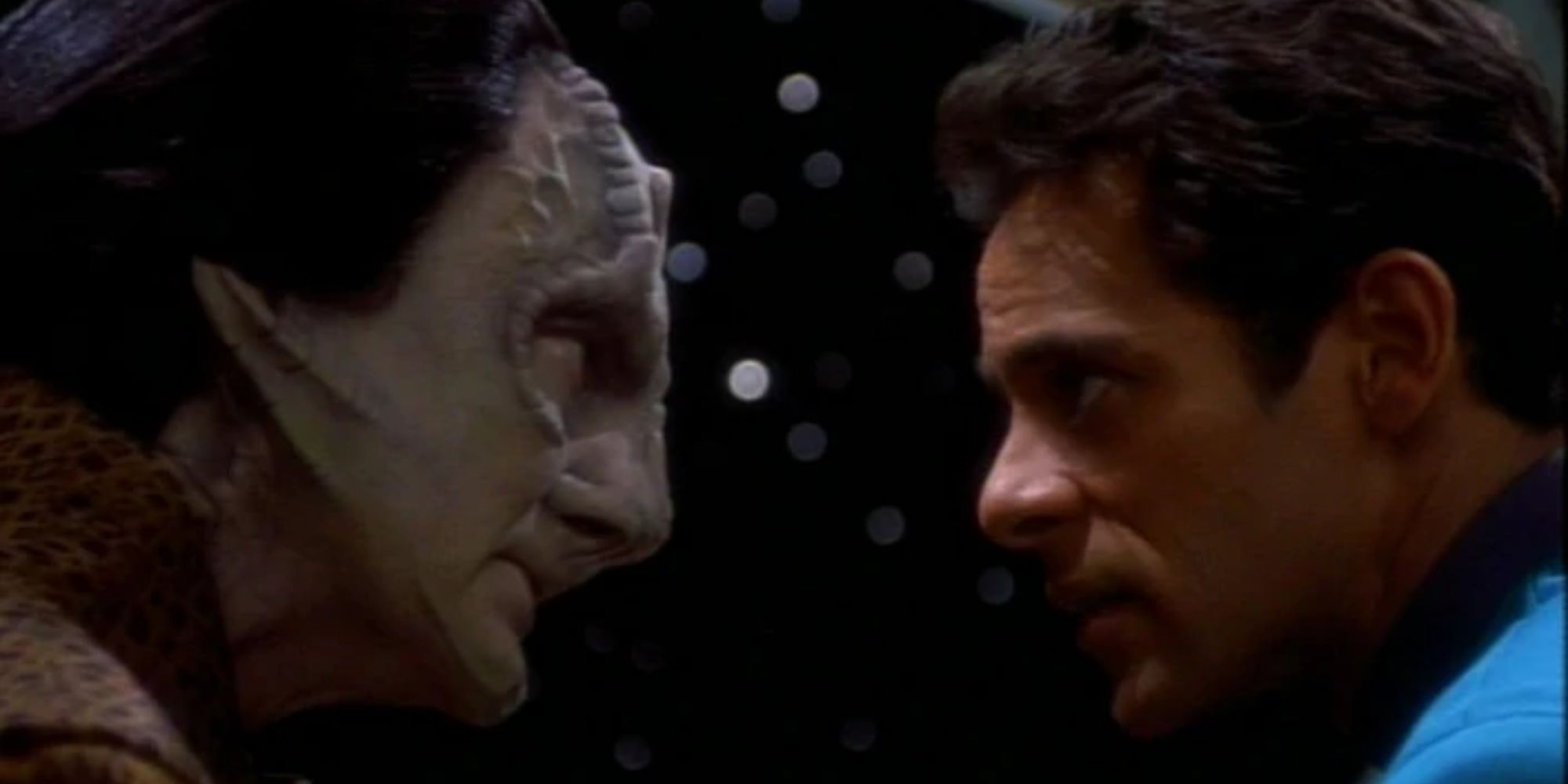Star Trek managed to predict mobile phones, headsets, and Alexa, but it couldn’t quite predict gay people. Well, that’s unfair, it tried. The studio was clearly aware that the queers were coming, they just struggled to place them in the future they had crafted. Oh, and they wanted to pander to homophobic viewers. That didn’t help either.
This was something writers of the time had to adapt to - getting the gays in their shows without offending the conservative crowd, or providing enough subtext for queer viewers to pick apart and claim as their own as a slight form of representation. Even more so if you were writing for one of the biggest shows on television at the time. As a result, media of the 1990s and 2000s is filled with allegories for gay people, but few actual concrete examples of them. The other option was to queer code your characters, giving them traits that an audience would perceive as “queer”, so they could simultaneously count as representation, while leaving the studio with plausible deniability.
The latter option gave us the best and worst “gay” characters in media. From walking caricatures to much-loved queer icons, this messy time in LGBTQ+ history is fascinating to look back on with a modern lens – particularly with the series which should have got it perfect right off the bat, Star Trek. However, for all of the praise its original run received for breaking down barriers, it really really struggled with queerness and gender fluidity when it first had a go at it in 1992.
Season 5, episode 17 of Star Trek: The Next Generation, The Outcast, is bad. It means well, showing a willingness to approach queer issues long before other franchises. But with a hellish mix of studio interference and not knowing the difference between a queer allegory and queer coding, it says very little and is straight-up bizarre to watch in 2022.
Here’s the gist: Riker falls for an alien from an androgynous race, Soren. This race, the J'naii, used to have two separate sexes, but evolved into a single one. As a result, they also have no gender and all dress the same, right down to their haircuts. They don’t wear makeup, they don’t even form real relationships anymore. Most J'naii are happy with this arrangement, except for some outcasts such as Soren, who in her case, wants to be a woman.
Wanting to be a man or a woman is seen as a mental illness to the J'naii - see the clever allegory coming in? Soren’s woman-ness is awoken when she starts fancying the epitome of masculinity and heterosexuality that is Riker. They hook up, they’re found out, and there’s a trial where Riker is all like “love is love!” Soren’s taken away and undergoes conversion therapy. She’s now sexless, genderless, and happy about it, apparently. Riker’s bummed out, and Picard’s like “ah, is what it is”, and they fly off.
This sounds innocent enough, but it does leave an odd taste in the mouth. For starters, there’s no separation of gender, sex, and sexuality. There’s even a bit where Dr Crusher goes on about how men grow beards to get ladies, and women wear makeup to get guys. But guys usually try and do all of the attracting, because these things are inherent to sex, I guess. Worf is also sexist, for some reason. Basically, Soren has a bunch of fun learning about how men and women are totally different all the time. No exceptions.
The biggest problem here is that it’s meant to be a pro-gay story, but the main pair are fighting to be heteronormative. Riker isn’t challenged - his partner is very fem presenting and the intention is to portray her as a cis woman, forced to be sexless. Gender roles aren’t challenged, and all mentions of relationships suggest that men like women, and women like men. Also, Riker calls Soren “it” at one point. Wild.
This is what you get when you have too many cooks in the kitchen, and none of them are gay. Jonathan Frakes, legend that he is, agrees that the episode wasn’t “gutsy” enough. He also said Soren should have been masculine-presenting, possibly played by a man. In the same 2001 article that quotes Frakes, queer fans also say that the episode gives the impression that the J'naii are the gay ones - and they sound like something “right from Rush Limbaugh's show”, with “gender deviants” destroying the traditional, heterosexual family.
So, Star Trek had already tried both the gay allegory and queer coding approach, and failed pretty goddamn badly. When I found out they took a few more swings at it in Deep Space Nine, I prepared for the worst. But honesty? I think we got the best.
Deep Space Nine was, and still is, a show for the gays. The Outcast was written to placate homophobic censorship, whereas Deep Space Nine’s queer rep pushed it to the limit. Here, we get clever workarounds instead of clumsy metaphors, and full story arcs rather than one episode affairs. And best of all, we finally know that gender and sexuality are two different things.
Jadzia Dax is the first character that comes to mind, and for good reason. Jadzia is a Trill - a human-like species that are the willing hosts of symbiotes that are passed down from Trill to Trill, in turn carrying all of their memories. When the series starts, Jadzia has recently become the host of the Dax symbiote, which was previously attached to a male Trill called Curzon. In DS9’s early episodes, people who knew Dax as Curzon adapt to Jadzia being the new host, which creates scenarios that trans fans have found relatable - and even a little hopeful. Many speak highly of how even the mighty Klingon happily and easily accept her new identity, effortlessly using the correct name and pronouns when corrected.
This interpretation of her character appears to be fairly recent among fans. Perhaps because misgendering Dax is not treated as a big deal until the last season (the captain’s nickname for her is ‘old man’), but also because she stole the show by making another piece of Star Trek history: the first gay kiss.
The fourth season episode Rejoined succeeds everywhere The Outcast fails. For starters, the couple in question are actually queer. Jadzia has to work with the wife of her previous host, and since she has all of his memories, she develops feelings for her too. However, it is strictly forbidden for Trill to be in a relationship with the same person as a previous host, so we have the same oppressive society The Outcast tried to represent. Sure, it’s not actual homophobia, but here it’s impossible to see the bad guys as the gay ones. They’re obviously an allegory for homophobes. Them seeing the relationship as “unproductive” because nothing new will be gained is clearly a stand-in for the argument that gays shouldn’t get married because they won’t have biological kids.
It all culminates in a sad, forbidden kiss that both Trill society and the real world were outraged by. Jadzia is threatened by her people, as were the Star Trek writers in real life. Some southern states censored it. One of the writer’s parents berated him for the episode, saying there should have been a warning before it aired. Similarly in the episode itself, Lenara Kahn, Jadzia’s partner, is criticized by her brother for following her heart. When you have homophobes getting just as mad as the bad guys in your show, you know you’ve done something right.
From then on, Dax becomes a beautiful way to express how gender is a spectrum. She speaks so casually about how in her past lives, she’s been both a mother and a father. A husband and a wife. All of these identities make her who she is now, living as a woman.
But even beyond Dax, there’s another member of the Deep Space Nine crew who makes the show as wonderfully queer as it is: Garak.
Garak, the lone Cardassian inhabitant of Deep Space Nine, was meant to be queer. Unfortunately, without the same “no homo” loophole that Dax has, this was shot down. The actor just ran with it anyway, describing Garak’s sexuality as “inclusive”. Executive producer Ira Steven Behr was clearly on board, agreeing that he was “clearly gay or queer”. And he is, despite only ever being with a woman in the show.
For starters, he is like no other Cardassian in the show, and he is hated for it. He was exiled from his homeworld for reasons we never discover, but we can probably guess. He’s cunning, clever, and loves to talk a lot. He’s even pretty flamboyant in his own way, and runs a tailor shop. In a 1990s show, this should have made him an insulting stereotype. But he feels much more like a love letter to the community, with his Oscar Wilde-esque wit, and genuine depth.
Unlike Dax, there’s no specific episode I’d point to that best portrays Garak’s sexuality. He’s best known for his close friendship with Dr Bashir, and any interaction with them is a delight. When discussing his queerness, Behr said that he would have been particularly interested in how his being openly non-straight would have “affected his relationship with Bashir”, and their friendship does give us the scraps of what could have been. But even as the show stands, he’s one of the best, deepest, and morally ambiguous non-gay gays out there. It’s just a shame he didn’t get to shine as bright as the crew wanted.
But despite all the censorship, DS9 still feels like a show written with love and respect for its queer fans. TNG is great, but it’s very much a show in which a particular social issue is just the topic of the week. DS9, on the other hand, feels so ahead of its time with its series-long storylines, and writers that wanted to spend a whole show exploring queerness, not just one week.
It’s best we move on from the kind of queer writing Star Trek attempted with The Outcast. Even if the writers meant well, it’s messy and doesn’t force bigots to confront their own hatred. DS9, on the other hand, gave us a gay kiss and gay energy throughout its seven season run. The series has been an absolute delight to watch thirty years later, and I hope that one day, these characters can be revisited and allowed to be their true selves.

